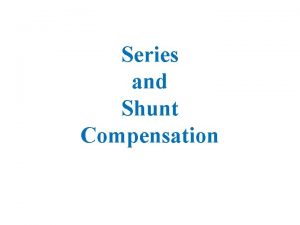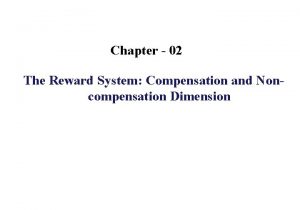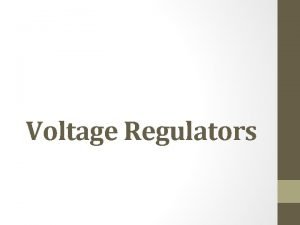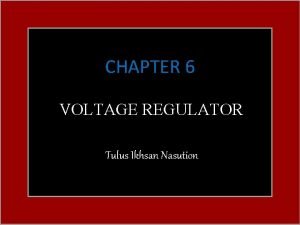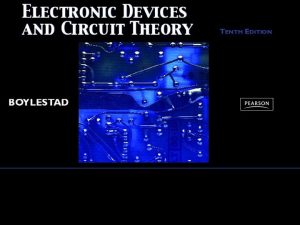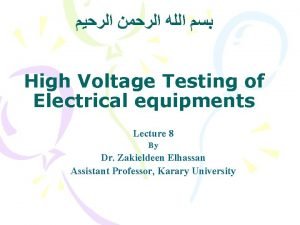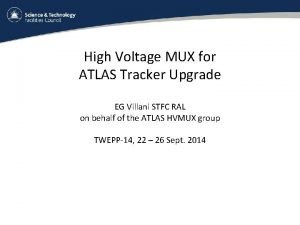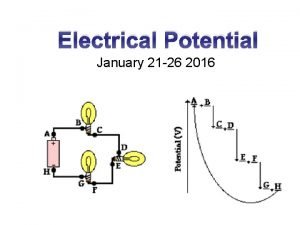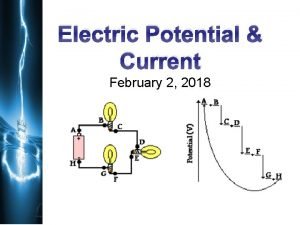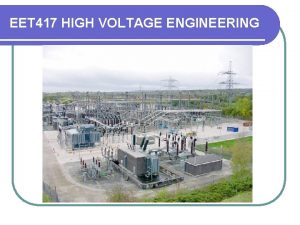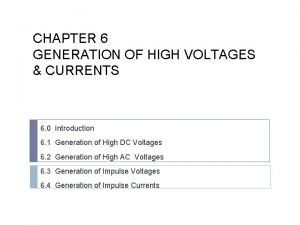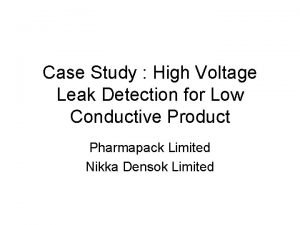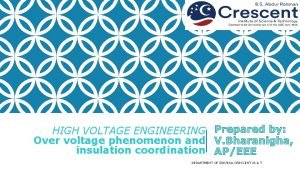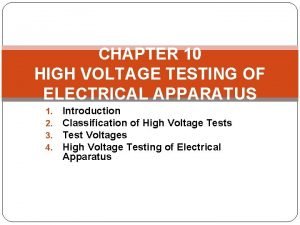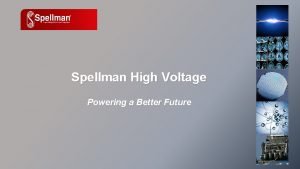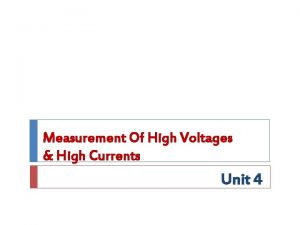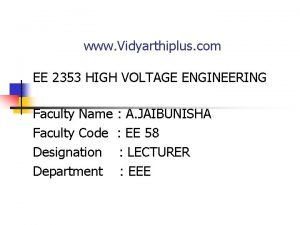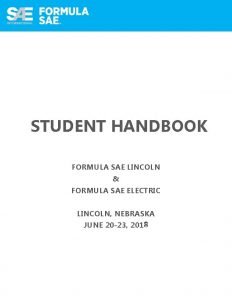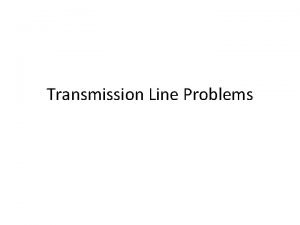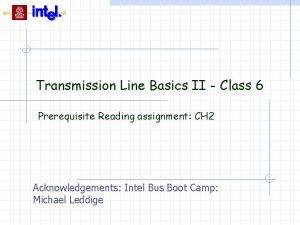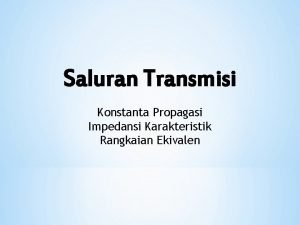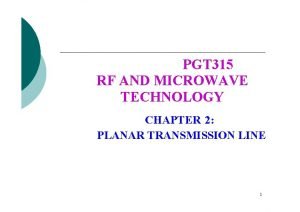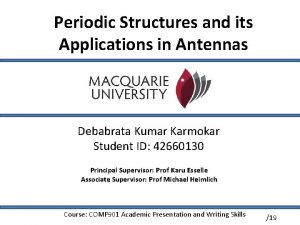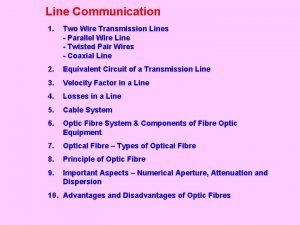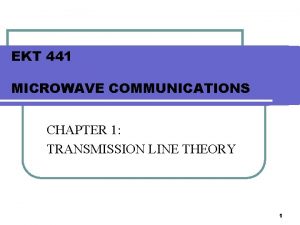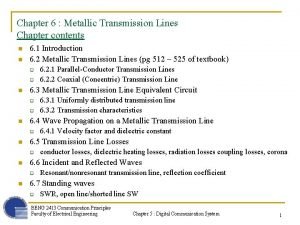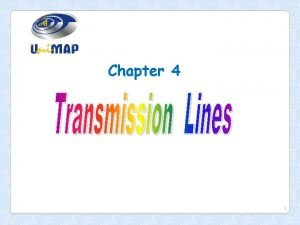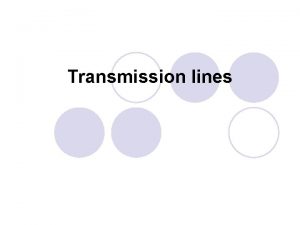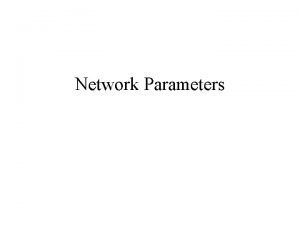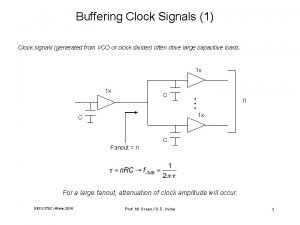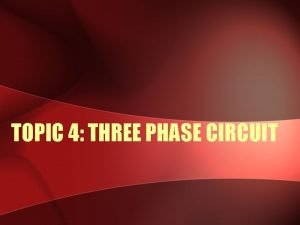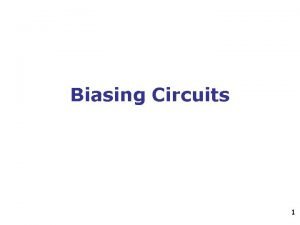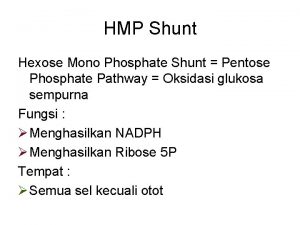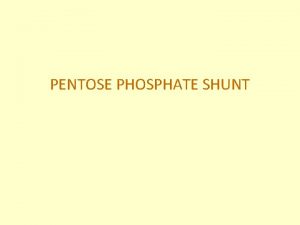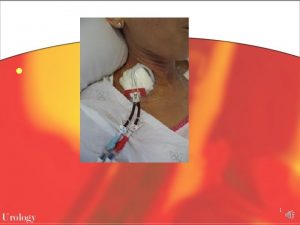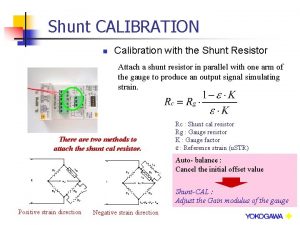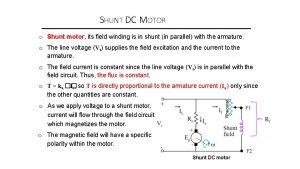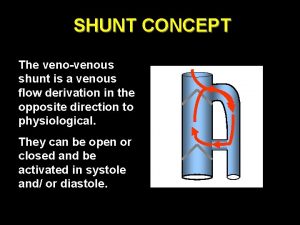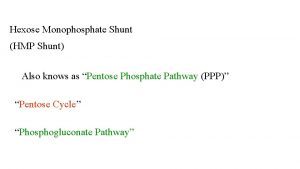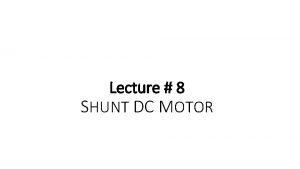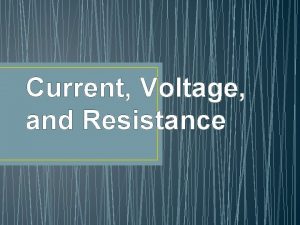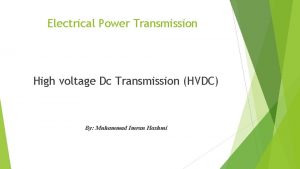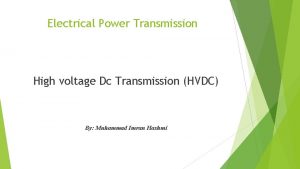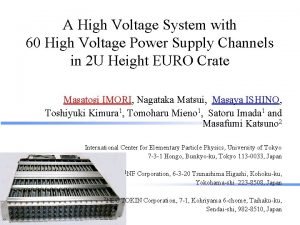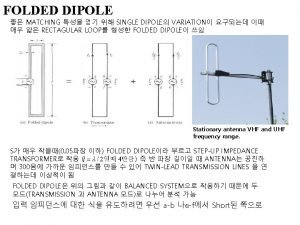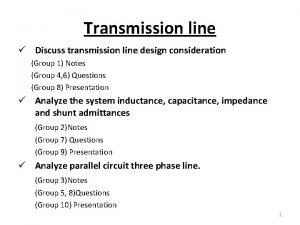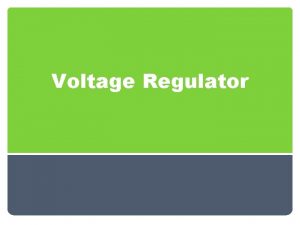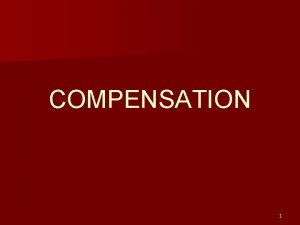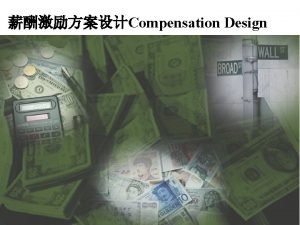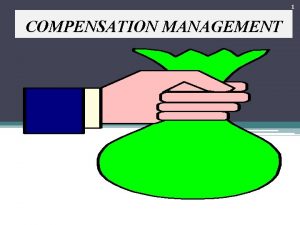Shunt Compensation For high voltage transmission line the






























































- Slides: 62

Shunt Compensation • For high voltage transmission line the line capacitance is high and plays a significant role in voltage conditions of the receiving end. • When the line is loaded then the reactive power demand of the load is partially met by the reactive power generated by the line capacitance and the remaining reactive power demand is met by the reactive power flow through the line from sending end to the receiving end. 8/8/2019 FACTS for EEE , V SEMESTER 2019 by Y. Mastanamma 1

Shunt Compensation (continued…) • When load is high (more than SIL) then a large reactive power flows from sending end to the receiving end resulting in large voltage drop in the line. • To improve the voltage at the receiving end shunt capacitors may be connected at the receiving end to generate and feed the reactive power to the load so that reactive power flow through the line and consequently the voltage drop in the line is reduced. 8/8/2019 FACTS for EEE , V SEMESTER 2019 by Y. Mastanamma 2

Shunt Compensation (continued…) • To control the receiving end voltage a bank of capacitors (large number of capacitors connected in parallel) is installed at the receiving end and suitable number of capacitors are switched in during high load condition depending upon the load demand. • Thus the capacitors provide leading VAr to partially meet reactive power demand of the load to control the voltage. 8/8/2019 FACTS for EEE , V SEMESTER 2019 by Y. Mastanamma 3

Shunt Compensation (continued…) • When load is small (less than SIL) then the load reactive power demand may even be lesser than the reactive power generated by the line capacitor. Under these conditions the reactive power flow through the line becomes negative, i. e. , the reactive power flows from receiving end to sending end, and the receiving end voltage is higher than sending end voltage (Ferranti effect). • To control the voltage at the receiving end it is necessary to absorb or sink reactive power. This is achieved by connecting shunt reactors at the receiving end. 8/8/2019 FACTS for EEE , V SEMESTER 2019 by Y. Mastanamma 4

Shunt Compensation (continued…) • To control the receiving end voltage generally one shunt rector is installed and switched in during the light load condition. • To meet the variable reactive power demands requisite number of shunt capacitors are switched in, in addition to the shunt reactor, which results in adjustable reactive power absorption by the combination. 8/8/2019 FACTS for EEE , V SEMESTER 2019 by Y. Mastanamma 5

8/8/2019 FACTS for EEE , V SEMESTER 2019 by Y. Mastanamma 6

8/8/2019 FACTS for EEE , V SEMESTER 2019 by Y. Mastanamma 7

OBJECTIVES OF SHUNT COMPENSATION 1. Steady-state transmittable power can be increased. 2. Voltage profile can be controlled. 3. Shunt connected reactors (fixed or mechanically switched) are applied to minimize line over voltage under light load conditions. 4. Shunt connected capacitors are applied to maintain voltage levels under heavy load conditions. 8/8/2019 FACTS for EEE , V SEMESTER 2019 by Y. Mastanamma 8

8/8/2019 FACTS for EEE , V SEMESTER 2019 by Y. Mastanamma 9

8/8/2019 FACTS for EEE , V SEMESTER 2019 by Y. Mastanamma 10

8/8/2019 FACTS for EEE , V SEMESTER 2019 by Y. Mastanamma 11

8/8/2019 FACTS for EEE , V SEMESTER 2019 by Y. Mastanamma 12

8/8/2019 FACTS for EEE , V SEMESTER 2019 by Y. Mastanamma 13

8/8/2019 FACTS for EEE , V SEMESTER 2019 by Y. Mastanamma 14

8/8/2019 FACTS for EEE , V SEMESTER 2019 by Y. Mastanamma 15

The potential effectiveness of shunt Compensator on transient stability improvement can be conveniently evaluated by “EQUAL AREA CRITERION”. Assume that both the uncompensated and compensated systems are subjected to the same fault for the same period of time. The dynamic behaviour of these systems is illustrated in the figures. 8/8/2019 FACTS for EEE , V SEMESTER 2019 by Y. Mastanamma 16

8/8/2019 FACTS for EEE , V SEMESTER 2019 by Y. Mastanamma 17

8/8/2019 FACTS for EEE , V SEMESTER 2019 by Y. Mastanamma 18

8/8/2019 FACTS for EEE , V SEMESTER 2019 by Y. Mastanamma 19

Methods of Controllable VAR Generation: Ø Capacitors generate and inductors (reactors)absorb reactive power when connected to an ac power source. ØThey have been used with mechanical switches for controlled VAR generation and absorption. ØContinuously variable VAR generation or absorption for dynamic system compensation as originally provided by • Over or under-excited rotating synchronous machines • Saturating reactors in conjunction with fixed capacitors ØUsing appropriate switch control, the VAR output can be controlled continuously from maximum capacitive to maximum inductive output at a given bus voltage. Ø More recently gate turn-off thyristors and other power semiconductor devices with internal turn off capacity have been use of ac capacitors or reactors. 8/8/2019 FACTS for EEE , V SEMESTER 2019 by Y. Mastanamma 20

8/8/2019 FACTS for EEE , V SEMESTER 2019 by Y. Mastanamma 21

8/8/2019 FACTS for EEE , V SEMESTER 2019 by Y. Mastanamma 22

8/8/2019 FACTS for EEE , V SEMESTER 2019 by Y. Mastanamma 23

8/8/2019 FACTS for EEE , V SEMESTER 2019 by Y. Mastanamma 24

8/8/2019 FACTS for EEE , V SEMESTER 2019 by Y. Mastanamma 25

8/8/2019 FACTS for EEE , V SEMESTER 2019 by Y. Mastanamma 26

8/8/2019 FACTS for EEE , V SEMESTER 2019 by Y. Mastanamma 27

Thyristor Switched Capacitor (TSC) 8/8/2019 FACTS for EEE , V SEMESTER 2019 by Y. Mastanamma 28

A thyristor switched capacitor (TSC) is a type of equipment used for compensating reactive power in electrical power systems. It consists of a power capacitor connected in series with a bidirectional thyristor valve and, usually, a current limiting reactor (inductor). The thyristor switched capacitor is an important component of a Static VAR Compensator(SVC), where it is often used in conjunction with a thyristor controlled reactor (TCR). Static VAR compensators are a member of the Flexible AC transmission system (FACTS) family. It consists of a capacitor, a bidirectional thyristor valve, and a relatively small surge current limiting reactor. This reactor is needed primarily to limit the surge current in the thyristor valve under abnormal operating conditions. It may also be used to avoid resonances with the ac system impedance at particular frequencies. 8/8/2019 FACTS for EEE , V SEMESTER 2019 by Y. Mastanamma 29

Under steady-state conditions, when the thyristor valve is closed and the TSC branch is connected to a sinusoidal ac voltase source. V =Vm sin wt. the current in the branch is given by The TSC branch can be disconnected ("switched out") at any current zero by prior removal of the gate drive to the thyristor valve. At the current zero crossing, the capacitor voltage is at its peak value. The disconnected capacitor stays charged to this voltage and, consequently, the voltage across the non conducting thyristor valve varies between zero and the peak-to-peak value of the applied ac voltage. 8/8/2019 FACTS for EEE , V SEMESTER 2019 by Y. Mastanamma 30

8/8/2019 FACTS for EEE , V SEMESTER 2019 by Y. Mastanamma 31

Off-state voltage When the TSC is switched off, or ‘’blocked’’, no current flows and the voltage is supported by the thyristor valve. After the TSC has been switched off for a long time (hours) the capacitor will be fully discharged, and the thyristor valve will experience only the AC voltage of the SVC busbar. However, when the TSC turns off, it does so at zero current, corresponding to peak capacitor voltage. The capacitor only discharges very slowly, so the voltage experienced by the thyristor valve will reach a peak of more than twice the peak AC voltage, about half a cycle after blocking. The thyristor valve needs to contain enough thyristors in series to withstand this voltage safely. 8/8/2019 FACTS for EEE , V SEMESTER 2019 by Y. Mastanamma 32

Deblocking – normal conditions When the TSC is turned on ("deblocked") again, care must be taken to choose the correct instant in order to avoid creating very large oscillatory currents. Since the TSC is a resonant circuit, any sudden shock excitation will produce a high frequency ringing effect which could damage thyristor valve. The optimum time to turn on a TSC is when the capacitor is still charged to its normal peak value and the turn-on command is sent at the minimum of valve voltage. If the TSC is deblocked at this point, the transition back into the conducting state will be smooth. 8/8/2019 FACTS for EEE , V SEMESTER 2019 by Y. Mastanamma 33

Deblocking – abnormal conditions Sometimes, however, the TSC may turn on at an incorrect instant (as a result of a control or measurement fault), or the capacitor may become charged to a voltage above the normal value so that even at the minimum of valve voltage, a large transient current results. The current in the TSC will then consist of a fundamental-frequency component (50 Hz or 60 Hz) superimposed on a much larger current at the tuned frequency of the TSC. This transient current can take hundreds of milliseconds to die away, during which time the cumulative heating in the thyristors may be excessive. 8/8/2019 FACTS for EEE , V SEMESTER 2019 by Y. Mastanamma 34

(1) if the residual capacitor voltage is lower than the peak ac voltage (Vc < V), then the correct instant of switching is when the instantaneous ac voltage becomes equal to the capacitor voltage; and (2) if the residual capacitor voltage is equal to or higher than the peak ac voltage (Vc > V), then the correct switching is at the peak of the ac voltage at which the thyristor valve voltage is minimum. 8/8/2019 FACTS for EEE , V SEMESTER 2019 by Y. Mastanamma 35

8/8/2019 FACTS for EEE , V SEMESTER 2019 by Y. Mastanamma 36

FC-TCR 8/8/2019 Fixed Capacitor, Thyristor-Controlled Reactor Type Var Ganerator FACTS for EEE , V SEMESTER 2019 by Y. Mastanamma 37

8/8/2019 FACTS for EEE , V SEMESTER 2019 by Y. Mastanamma 38

Basic FC-TCR type static var generator and its var demand versus var output characteristic 8/8/2019 FACTS for EEE , V SEMESTER 2019 by Y. Mastanamma 39

Functional control scheme for the FC-TCR type static var generator provide four basic functions Synchronous Timing: Uses PLL and so runs in synchronism with the ac system voltage Reactiue current (or admittance) to firing angle conuersion Computation of the required fundamental reactor current IFL, Thyristor firing pulse generation 8/8/2019 FACTS for EEE , V SEMESTER 2019 by Y. Mastanamma 40

The constant capacitive var generation (Qc) of the fixed capacitor is opposed by the variable var absorption (Q) of the thyristor-controlled reactor, to yield the total var output (Q) required. At the maximum capacitive var output, the thyristor-controlled reactor is off (α = 90"). To decrease the capacitive output, the current in the reactor is increased by decreasing delay angle α. At zero var output, the capacitive and inductive currents become equal and thus the capacitive and inductive vars cancel out. With a further decrease of angle α (assuming that the rating of the reactor is greater than that of the capacitor), the inductive current becomes larger than the capacitive current, resulting in a net inductive var output. At zero delay angle, the thyristor-controlled reactor conducts current over the full 180 degree interval, resulting in maximum inductive var output that is equal to the difference between the vars generated by the capacitor and those absorbed by the fullv conducting reactor. 8/8/2019 FACTS for EEE , V SEMESTER 2019 by Y. Mastanamma 41

8/8/2019 FACTS for EEE , V SEMESTER 2019 by Y. Mastanamma 42

8/8/2019 FACTS for EEE , V SEMESTER 2019 by Y. Mastanamma 43

8/8/2019 FACTS for EEE , V SEMESTER 2019 by Y. Mastanamma 44

Static Var Compensator(SVC) • The SVC is an excellent tool for achieving dynamic voltage control of power systems. Increased efficiency in power systems • The global trend is towards ever larger power networks, longer transmission lines, and higher consumption. Energy is also becoming increasingly expensive. To cope, power transmission and distribution systems have to become more efficient. It has increasing power transmission and distribution capacity at a lower cost. 8/8/2019 FACTS for EEE , V SEMESTER 2019 by Y. Mastanamma 45

SVC used as a voltage stabilization SVC is the preferred tool for dynamic reactive power support in high voltage transmission grids. it will counteract the often hazardous voltage depressions that follow in conjunction with faults in the grid. These highly dynamic events, where the ever increasing use of induction motors (like those in air-conditioning units and wind power turbine-generators) stresses the grid, will need an SVC to maintain the grid voltage and safeguard the fault ride-through capability. • • Static var compensator includes the following major components 1. Control system 2. Thyristor valves 3. Capacitor banks 4. Reactors 8/8/2019 FACTS for EEE , V SEMESTER 2019 by Y. Mastanamma 46

Basic SVC schemes • Thyristor controlled reactor and fixed capacitor, TCR/FCs are characterized by – Continuous control – No transients – Elimination of harmonics by tuning the FCs as filters – Compact design • Thyristor switched capacitor( TSC) TSCs are characterized by – Stepped control – No transients – No harmonics – Low losses – Redundancy and flexibility FACTS for EEE , V SEMESTER 2019 by 8/8/2019 Y. Mastanamma 47

The Benefits Of SVC To Power Transmission • Stabilized voltages in weak systems • Reduced transmission losses • Increased transmission capacity, to reduce, defer or eliminate the need for new lines. • Higher transient stability limit • Increased damping of minor disturbances • Greater voltage control and stability • Power oscillation damping 8/8/2019 FACTS for EEE , V SEMESTER 2019 by Y. Mastanamma 48

Fig. shows Static Var Compensator(SVC) 8/8/2019 FACTS for EEE , V SEMESTER 2019 by Y. Mastanamma 49

An SVC comprises one or more banks of fixed or switched shunt capacitors or reactors, of which at least one bank is switched by thyristors. Elements which may be used to make an SVC typically include: Thyristor controlled reactor (TCR), where the reactor may be air- or iron-cored Thyristor switched capacitor (TSC) Harmonic filter(s) Mechanically switched capacitors or reactors (switched by a circuit breaker) The SVC is an automated impedance matching device, designed to bring the system closer to unity power factor. SVCs are used in two main situations: Connected to the power system, to regulate the transmission voltage ("Transmission SVC") Connected near large industrial loads, to improve power quality ("Industrial SVC") 8/8/2019 FACTS for EEE , V SEMESTER 2019 by Y. Mastanamma 50

In transmission applications, the SVC is used to regulate the grid voltage. If the power system's reactive load is capacitive (leading), the SVC will use thyristor controlled reactors to consume vars from the system, lowering the system voltage. Under inductive (lagging) conditions, the capacitor banks are automatically switched in, thus providing a higher system voltage. By connecting the thyristor controlled reactor, which is continuously variable, along with a capacitor bank step, the net result is continuouslyvariable leading or lagging power. 8/8/2019 FACTS for EEE , V SEMESTER 2019 by Y. Mastanamma 51

In industrial applications, SVCs are typically placed near high and rapidly varying loads, such as arc furnaces, where they can smooth flicker voltage. 8/8/2019 FACTS for EEE , V SEMESTER 2019 by Y. Mastanamma 52

STATCOM or Static Synchronous Compensator It is a power electronic device using force commutated devices like IGBT, GTO etc. to control the reactive power flow through a power network and thereby increasing the stability of power network. STATCOM is a shunt device i. e. it is connected in shunt with the line. A Static Synchronous Compensator (STATCOM) is also known as a Static Synchronous Condenser (STATCON). It is a member of the Flexible AC Transmission System (FACTS) family of devices. 8/8/2019 FACTS for EEE , V SEMESTER 2019 by Y. Mastanamma 53

The terms Synchronous in STATCOM mean that it can either absorb or generate reactive power in synchronization with the demand to stabilize the voltage of the power network. δ is the angle between V 1 and V 2. Thus if we maintain angle δ = 0 then Reactive power flow will become Q = (V 2/X)[V 1 -V 2] active power flow will become P = V 1 V 2 Sinδ / X =0

If the angle between V 1 and V 2 is zero, the flow of active power becomes zero and the flow of reactive power depends on (V 1 – V 2). Thus for flow of reactive power there are two possibilities. 1) If the magnitude of V 1 is more than V 2, then reactive power will flow from source V 1 to V 2. 2) If the magnitude of V 2 is more than V 1, reactive power will flow from source V 2 to V 1. 55

STATCOM has the following components: 1) A Voltage Source Converter, VSC The voltage-source converter is used to convert the DC input voltage to an AC output voltage. Two of the common VSC types are as below. a) Square-wave Inverters using Gate Turn-Off Thyristors: In this type of VSC, output AC voltage is controlled by changing the DC capacitor input voltage, as the fundamental component of the converter output voltage is proportional to the DC voltage. b) PWM Inverters using Insulated Gate Bipolar Transistors (IGBT): It uses Pulse Width Modulation (PWM) technique to create a sinusoidal waveform from a DC voltage source with a typical chopping frequency of a few k. Hz. In contrast to the GTO-based type, the IGBT-based VSC utilizes a fixed DC voltage and varies its output AC voltage by changing the modulation index of the PWM modulator. 2) DC Capacitor is used to supply constant DC voltage to the voltage source converter, VSC. 3) Inductive Reactance A Transformer is connected between the output of VSC and Power System. Transformer basically acts as a coupling medium. In addition, Tranformer neutralize harmonics contained in the square waves produced by VSC. 4) Harmonic Filter attenuates the harmonics and other high frequency components due to the 56 VSC.

A simplified diagram along with equivalent electrical circuit of STATCOM 8/8/2019 57

If demand increases in the power system, STATCOM increases its output voltage V 1 while maintain the phase difference between V 1 and V 2 to zero (it shall be noted here that there will always exists small phase angle between V 1 and V 2 to cater for the leakage impedance drop in the interconnecting Transformer). As V 1 > V 2, reactive power will flow from STATCOM to the power system. Thus STATCOM, supplies reactive power and acts as reactive power generator. Again, if the voltage of power system increases due to load throw off, STATCOM will reduce its output voltage V 1 and therefore will absorb reactive power to stabilize the voltage to normal value. The above mode of operation of STATCOM is called Voltage Regulation Mode. 8/8/2019 FACTS for EEE , V SEMESTER 2019 by Y. Mastanamma 58

There exists a limitation and this limitation is imposed by the current carrying capacity of force commutated devices like IGBT, GTO etc. Therefore, if the operation of STATCOM reaches their limitation, it does not further increases or decreases its output voltage V 1 rather it supplies or absorbs fixed reactive power equal to its limiting value at a fixed voltage and current and acts like constant current source. This mode of operation of STATCOM is called VAR Control Mode. 59

The operation of STATCOM can be classified into two modes: 1) Voltage Regulation Mode 2) VAR Control Mode V-I Characteristics of STATCOM As seen in Fig, voltage regulation capability of STATCOM is from V 1 (in lower side) to V 2 (in upper side of power system). If the voltage of power system goes below V 1 or above V 2, STATCOM acts in VAR Control mode. Here V 1 and V 2 are just taken for example, it should not be confused with the V 1 (used for output voltage of STATCOM) and V 2 (Voltage of power system). 60

Usually a STATCOM is installed to support electrical networks that have a poor power factor and often poor voltage regulation. The most common use of STATCOM is for voltage stability. A STATCOM is a voltage source converter (VSC) based device, with the voltage source behind a reactor. The voltage source is created from a DC capacitor and therefore a STATCOM has very little active power capability. However, its active power capability can be increased if a suitable energy storage device is connected across the DC capacitor. 61

8/8/2019 FACTS for EEE , V SEMESTER 2019 by Y. Mastanamma 62
 Shunt-series feedback amplifier
Shunt-series feedback amplifier Line vs phase voltage
Line vs phase voltage Advantages of series compensation
Advantages of series compensation Noncompensation
Noncompensation Line regulation
Line regulation Voltage regulator definition
Voltage regulator definition Feedback and oscillator circuits
Feedback and oscillator circuits Voltage level
Voltage level On-off control is also called as
On-off control is also called as Convert rms to peak voltage
Convert rms to peak voltage What are the objectives of earthing
What are the objectives of earthing Representative fraction
Representative fraction High voltage testing of electrical apparatus
High voltage testing of electrical apparatus High voltage mux
High voltage mux If a battery provides a high voltage it can
If a battery provides a high voltage it can If a battery provides a high voltage, it can ____.
If a battery provides a high voltage, it can ____. Electric field stress in high voltage engineering
Electric field stress in high voltage engineering Generation of high dc voltage
Generation of high dc voltage High voltage leak detection
High voltage leak detection Insulation coordination in high voltage engineering
Insulation coordination in high voltage engineering High voltage testing of electrical apparatus
High voltage testing of electrical apparatus Spellman high voltage stock
Spellman high voltage stock Generating voltmeter
Generating voltmeter Ee2353 high voltage engineering
Ee2353 high voltage engineering Downtown bagels & joe menu
Downtown bagels & joe menu Lossless transmission line problems
Lossless transmission line problems Transmission line basics
Transmission line basics Konstanta propagasi adalah
Konstanta propagasi adalah Microstrip transmission line
Microstrip transmission line Microstrip transmission line
Microstrip transmission line Mechanical design of transmission line
Mechanical design of transmission line Two wire line communication involves
Two wire line communication involves Swr formula
Swr formula Metallic transmission lines
Metallic transmission lines Line
Line Transmission line velocity
Transmission line velocity Scattering matrix
Scattering matrix Lossless transmission line
Lossless transmission line A balanced delta connected load having an impedance 20-j15
A balanced delta connected load having an impedance 20-j15 Voltage divider bias experiment
Voltage divider bias experiment Fspos vägledning för kontinuitetshantering
Fspos vägledning för kontinuitetshantering Typiska drag för en novell
Typiska drag för en novell Nationell inriktning för artificiell intelligens
Nationell inriktning för artificiell intelligens Ekologiskt fotavtryck
Ekologiskt fotavtryck Varför kallas perioden 1918-1939 för mellankrigstiden?
Varför kallas perioden 1918-1939 för mellankrigstiden? En lathund för arbete med kontinuitetshantering
En lathund för arbete med kontinuitetshantering Personalliggare bygg undantag
Personalliggare bygg undantag Tidbok för yrkesförare
Tidbok för yrkesförare Anatomi organ reproduksi
Anatomi organ reproduksi Vad är densitet
Vad är densitet Datorkunskap för nybörjare
Datorkunskap för nybörjare Tack för att ni lyssnade bild
Tack för att ni lyssnade bild Mall för debattartikel
Mall för debattartikel Delegerande ledarstil
Delegerande ledarstil Nyckelkompetenser för livslångt lärande
Nyckelkompetenser för livslångt lärande Påbyggnader för flakfordon
Påbyggnader för flakfordon Vätsketryck formel
Vätsketryck formel Svenskt ramverk för digital samverkan
Svenskt ramverk för digital samverkan Lyckans minut erik lindorm analys
Lyckans minut erik lindorm analys Presentera för publik crossboss
Presentera för publik crossboss Argument för teckenspråk som minoritetsspråk
Argument för teckenspråk som minoritetsspråk Vem räknas som jude
Vem räknas som jude Klassificeringsstruktur för kommunala verksamheter
Klassificeringsstruktur för kommunala verksamheter


